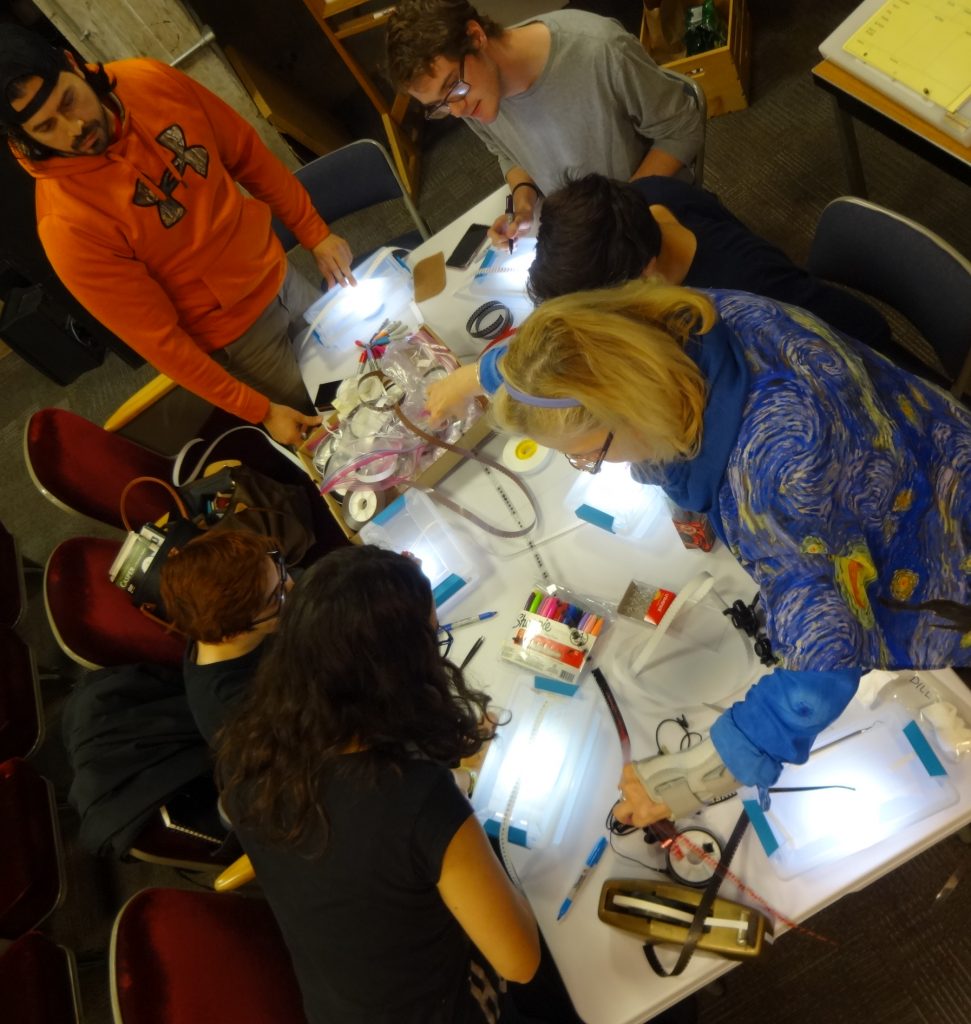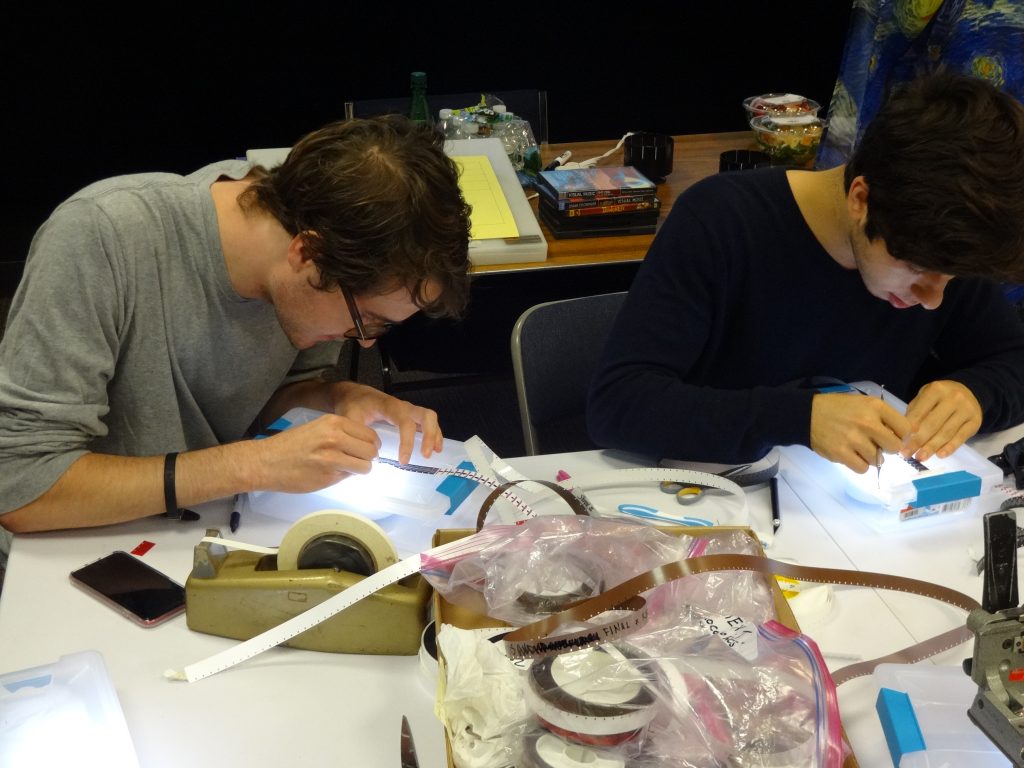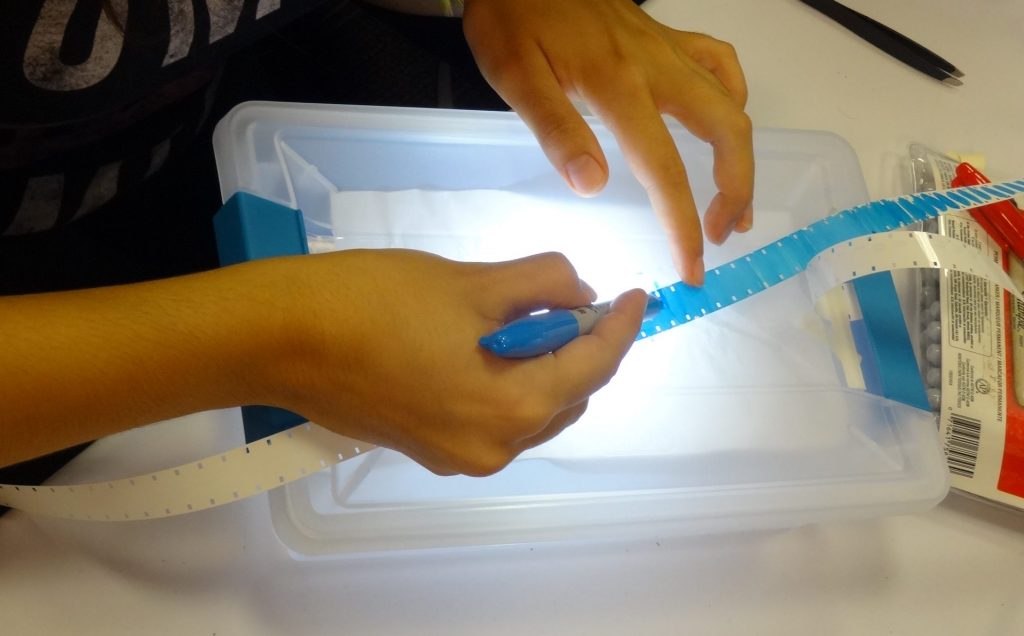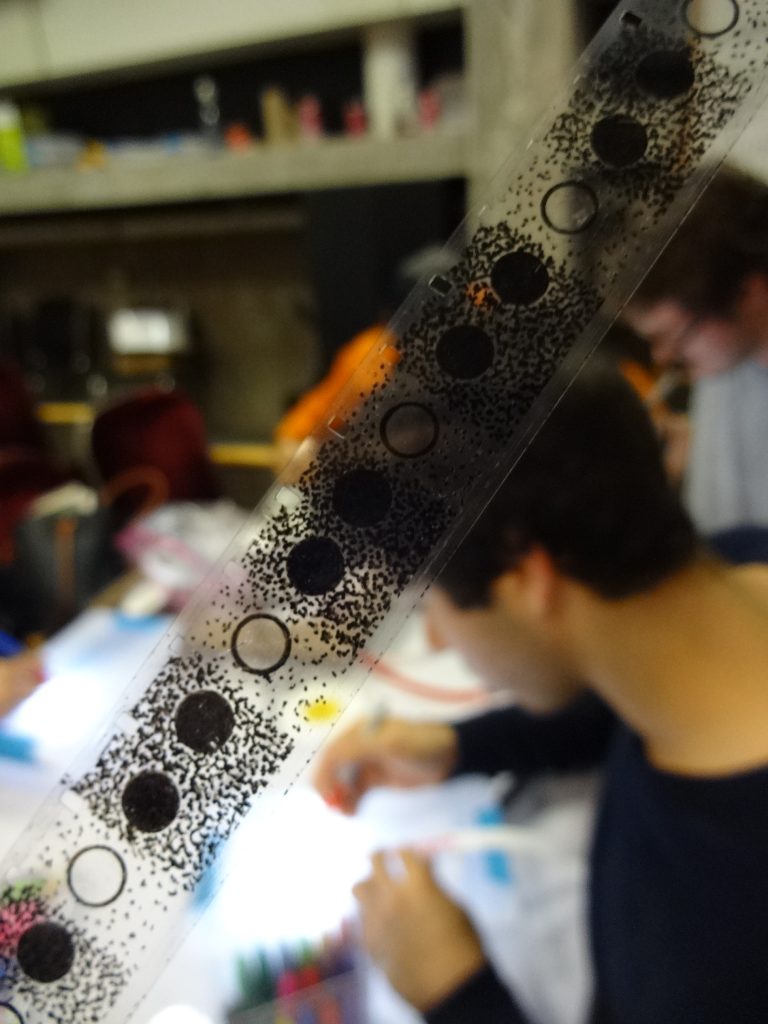We recently hosted a Saturday afternoon workshop in Direct Animation with historian, artist, and filmmaker Janeann Dill. Dr. Dill is an accomplished painter, animator, teacher, and the biographer of Jules Engle (1909-2003) founder of American experimental animation. This Spring she will lead a course on Animation Histories in CFILM, and so the workshop was a taste of things to come. Dr. Dill walked us through experimental animation’s history and development in Europe, showing work by Walter Ruttman, the unparalleled Oskar Fischinger, and others. With those images still buzzing around our heads, we grabbed light boxes, strips of 16mm leader, and started making movies.

Armed with sharpies, thumbtacks, and a dental tool (!), we set about scratching and drawing directly on filmstock. Marking out 24 frames at a time, we drew repeated patterns, each a little different from the last. This was our first experience in “camera-less filmmaking.” If you’ve ever made your own flipbook, or played with a zoetrope, you’ve created moving images from still pictures. The principle is the same, but there is something revelatory about marking and scraping a length of film. In out digital age when every smartphone is a mini-studio, we can lose touch with the magical simplicity of cinema’s fundamental illusion. Few of us really know what happens to that light once it hits an image sensor, or how data is stored and rearranged to put a video on our screen. Effortless moviemaking. But touching film, leaving a physical trace in a tiny 10 X 7 mm (roughly) rectangle, and working through six feet of stock and 240 frames for 10 seconds of movement — that gives us a new, tactile relationship with the medium.


We toiled steadily on our tiny artworks, squinting at the acetate and making endless dots and dashes. Dr. Dill unrolled a bit of film she’s been working on, and we gasped at its precision and detail.

Our efforts were crude, but enthusiastic. We spliced our bits of film together, wound them on a reel, and threaded a projector. In the end we had barely enough footage to fix focus. We held our collective breath as our little dots quivered, wobbled, and zipped across the screen. For a moment, all those still pictures became something else entirely, they came to life. We witnessed the spark that ignited an artform.
At the end of the day, we separated our bits of film so that we can continue to work on them, guaranteeing that the little movie we made will never again be shown. But I was lucky enough to make a smartphone video of one piece of film. Laura Perez Maquedano, a junior film major who’s short Méliès movie was featured a few months back on this blog, created this little dance of blue, black, and white.

